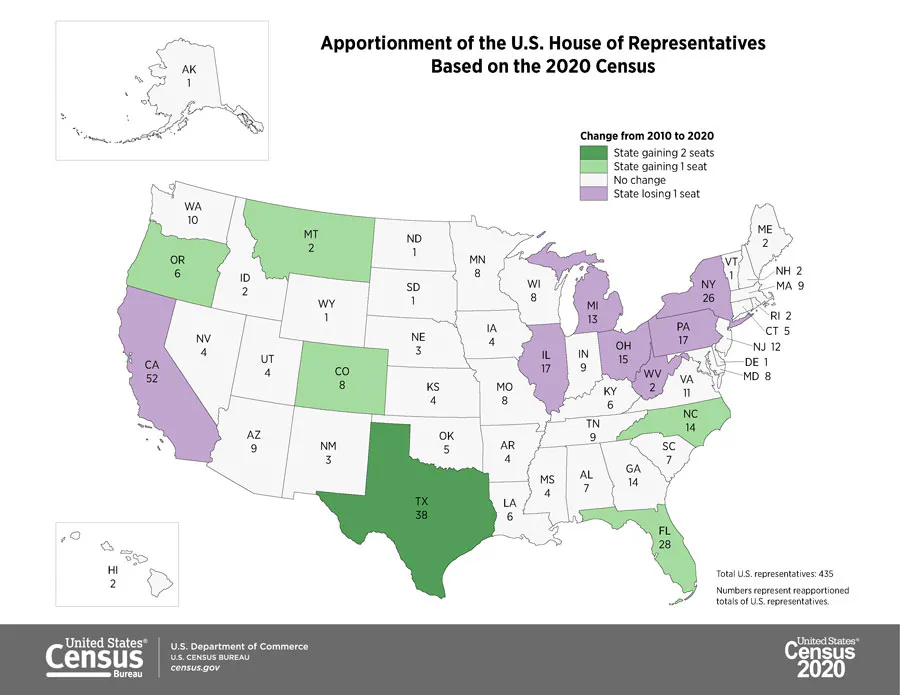U.S. Census Plays Key Role In Oklahoma Congressional Seats, Federal Funding
The U.S. Census Bureau conducts a nationwide survey every 10 years to count every resident in the U.S. and its territories. The census collects demographic information such as the number of people in a household, their age, race, and gender.Tuesday, September 24th 2024, 8:03 pm
The U.S. Census Bureau conducts a nationwide survey every 10 years to count every resident in the U.S. and its territories. The census collects demographic information such as the number of people in a household, their age, race, and gender.
Purpose and Use of Census Data
The U.S. Census serves several functions, primarily to apportion the 435 seats in the House of Representatives based on population changes over the decade.
Census data is also used for redistricting, and the redrawing of electoral district boundaries to ensure equal representation.
Federal funding for healthcare, education, and transportation is distributed based on census data, and businesses and policymakers use the information to plan infrastructure development, economic policies, and education.
The data is also essential for research on population growth, diversity, and socioeconomic conditions.
2020 Census: Oklahoma’s Population Growth
According to the 2020 U.S. Census, Oklahoma's population increased by 5.5%, adding 208,002 people since 2010, bringing the state's total population to 3,959,353.
Oklahoma County remains the largest with 796,292 residents, followed by Tulsa County with 669,279. Cimarron County is the smallest by population.
Oklahoma retained its five seats in the House, while Texas gained two. California, meanwhile, lost a seat, dropping to 52 representatives.
 Image Provided By: U.S. Census Bureau
Image Provided By: U.S. Census Bureau
Native American Representation in the Census
Native American tribes in Oklahoma have historically been undercounted in the census. In 2010, Native Americans living on reservations were undercounted by 4.9%, a figure that increased to 5.64% in 2020, including Alaska Native populations.
The Osage Nation conducted its own census in 2023 to gather information on the needs of its people, including education, income, health, and language.
In September 2024, the tribe agreed to share its census data with the U.S. Census Bureau, marking a historic collaboration.
“This is historic,” said U.S. Census Bureau Director Robert Santos. “We’re looking for this to be the start of greater cooperation with all tribes.”
 Image Provided By: Griffin Media
Image Provided By: Griffin Media
In 2020, Oklahoma Governor Kevin Stitt emphasized the importance of an accurate census, saying that federal funding for roads, bridges, healthcare, and infrastructure is tied directly to census numbers.
“A complete and accurate count of Oklahoma’s population is vital to the success of our state,” said Gov. Stitt. “With this Executive Order, I am directing state government to collaborate with leaders across Oklahoma to encourage participation and ensure that every Oklahoman is counted in the 2020 Census."
More Like This
September 24th, 2024
June 18th, 2025
June 18th, 2025
June 18th, 2025
Top Headlines
June 18th, 2025
June 18th, 2025
June 18th, 2025
June 18th, 2025







